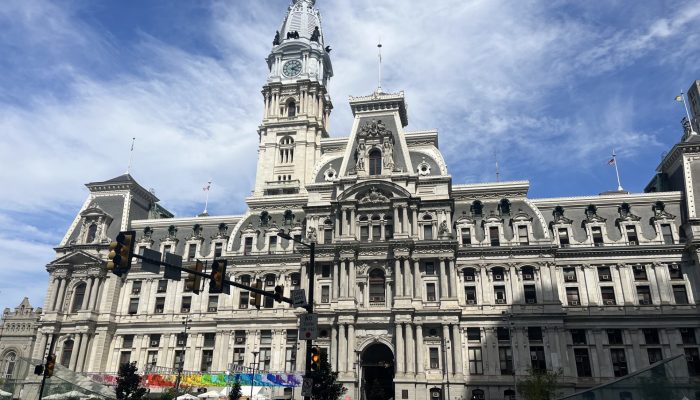Frequently, we look at someone with a chronic disease or someone who is in a particular situation and think that they should have done something differently to avoid that fate. If only, we think. If only they ate better. If only they took better care of themselves. If only they didn’t live in that neighborhood. In a perfect world, those thoughts might have some validity. But our world is far from perfect.
We live in a world where the zip code you are born in can predict how long you will live. We live in a world where the color of your skin can determine which care you get when you go to the hospital. In a world where your chance of getting a good-paying job still varies by race and ethnicity. This is a world where the personal decisions you make may not forestall tragedy. This is a world where you might not even be able to make decisions that can protect your health.
For many Philadelphians, racism is not just horrible words and crossing the street. Racism also exists on a higher level. Systemic racism is racism that is baked into the fabric of our society and affects each of us in ways that we cannot even see. Systemic racism predisposes Black and Brown Philadelphians to shorter lives, worse outcomes from chronic health conditions, and a higher likelihood of being in traumatic situations.
We know systemic racism as red-lining, but we also know that it exists in medical decision-making charts that assume that Black people can tolerate more pain than White people. We know that industrial plants and factories are situated near communities of color, and we know that even the tree canopy that helps protect us on hot summer days has less coverage in predominantly Black and Brown neighborhoods. All of these things, and so many more are what determine the course of our lives, without us even being aware of them.
During Black History Month, the Health Department strives to highlight public health conditions that are driven by systemic racism.
Drug Overdoses
Across the country, drug overdose deaths have continued to rise, with over 100,000 drug overdose deaths reported in the United States in 2021. In Philadelphia, drug overdose rates are the highest of any major U.S. city, and the number of overdose deaths reported annually continue to reach record highs.
In 2021, Philadelphia reported 1,276 drug fatalities. This was a 5 percent increase in overdoses from 2020 to 2021, 10 percent lower than the increase nationally. For the first time, however, there were more overdose fatalities among Black individuals compared to other racial/ethnic groups. Historically, fatal overdoses only involving stimulants had been highest among Black Philadelphians but, since 2019, deaths involving opioids and stimulants have been increasing at higher rates for Black Philadelphians than other racial and ethnic groups in the City.
What is causing this?
Two of the ways our City learns about overdose and substance use are through our drug testing partnership with CSFRE labs and by examining overdose data. This means that we are able to understand the general composition of drugs on the street, but so much of what we learn about overdose comes from the information we gain after a person fatally overdoses. The Department of Health’s drug testing program has found that fentanyl and other similar drugs are being added to counterfeit pills that resemble legitimate prescriptions like Xanax, Percocet, and OxyContin. The rapid increase in deaths involving opioids and stimulants may be because individuals are mixing pressed pills and other drugs containing fentanyl with other illicit substances like heroin or cocaine. There are limitations to our understanding though. We can only tell what substances were in a person’s system when they fatally overdosed, so it is not clear what substances they believed they were taking or if they were mixing substances intentionally or unintentionally. These shifting trends in substance use are not the only factors responsible for the growing racial disparities in fatal drug overdoses—the legacy of structural racism is also to blame.
The Black and Brown neighborhoods that are experiencing an increase in fatal overdoses are the same neighborhoods that were historically redlined and deemed “hazardous.” These neighborhoods continue to experience the effect of these policies and, today, have disproportionately high poverty levels and gun violence, as well as worse health outcomes than other areas in the city. A lack of investment in these communities, as well as the role of ongoing systemic racism, have left these communities with fewer jobs, less access to education, and high levels of acute and intergenerational trauma. These are all factors that contribute to an individual’s likelihood of developing a substance use disorder. We need to refocus our efforts for substance use and overdose prevention, as well as harm reduction, to address these changes in Philadelphia’s overdose crisis. The plan to address overdose in Philadelphia cannot simply target substance use behaviors, it must also center collaboration with communities impacted by structural racism.
What is the Health Department doing about it?
The Health Department’s Substance Use Prevention and Harm Reduction division is committed to addressing the harms caused by the jail-first strategies used in the “War on Drugs” approach. In previous decades, rather than framing substance use and overdoses as public health emergencies and developing a robust treatment and harm reduction infrastructure, governments chose to put people in jail and made it difficult for people impacted by substance use access to needed services. While people of all races and ethnicities who use opioids may still struggle to access resources like medications for opioid use disorder, there are even fewer treatment options for people who use stimulants.
Moving forward, SUPHR will continue to prioritize the development of culturally responsive treatment and harm reduction materials, the use of drug checking to inform people who use drugs about the composition of the drugs they’re using, as well as strengthening ongoing connections and partnerships with diverse community-based organizations that serve populations uniquely impacted by overdose and substance use.



